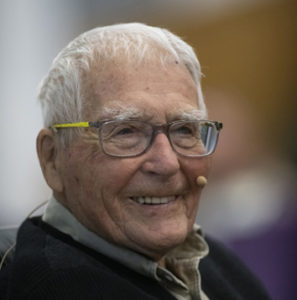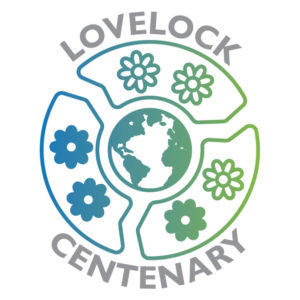By Mike Maunder, Executive Director The Eden Project & GSI Visiting Fellow
I was trained as a citizen of the Holocene and spend my career working in Holocene institutions striving to consolidate their role in the Anthropocene. When I was a student it was made clear that species extinction was an aberration restricted to exceptional and fragile places like oceanic islands and restoration ecology was narrowly focussed on the return to a historical model. How things have changed and how fast they have changed.
Gaia informs us that life drives planetary systems and that we are now the species that drives ecosystem and global change. As such we are the reckless author of the extinction crisis. We also know that species, whether bacteria, plant, fungi or animal, are the cogs in Gaia’s swirling mechanism. For most people the cogs of Gaia are invisible and as such profoundly under-valued.
Let’s explore two topics at this conference in honour of James Lovelock’s Centenary.


Firstly, how can species conservation and large-scale ecosystem regeneration be better used to manage global systems? Can we use it to rebuild or bolster the recycling of elements?
In thirty or so years I have seen ecological restoration jump in scale and scope from the small fenced plots on oceanic islands to landscape scale projects such as the Everglades Restoration project in Florida or the vast rangeland restoration initiatives of the Northern Rangeland Trust in Kenya. These projects wrap together concerns about endangered species with social issues, disaster mitigation and economic growth. A few nations, such as South Korea, have to a large extent rebuilt their natural capital through reforestation, and many African nations have made impressive tree planting commitments through the Bonn Declaration (although we fear the eucalyptus may dominate these new landscapes). Perhaps what is most impressive is that these large-scale landscape improvements have been driven both by global agencies and the initiatives of local communities. An inspiring example being the transformation of degraded farmlands through agroforestry by farmers in the Sahel.
Secondly, how can the reductionist biological institutions of the Holocene work with the Gaia model to better orchestrate and inspire a prosperous Anthropocene? Historically we have created taxonomically defined biodiversity institutions and what we need are networks of institutions that collectively promote a good Anthropocene. Can we harness the expertise of the zoo, natural history museum and botanic garden to celebrate the planetary engine, life, and to influence the way we value our lives and values? Part of the problem is that current funding models for key institutions can create a domestication of the mission, where the ultimate planetary impact of an institution is undermined by a focus on income generation. Perhaps it is time to reinvent these funding models.
In the last few years two projects have given me hope. One is a small-scale community project in Baringo, Kenya, that supports farmers to convert profoundly eroded bush into profit making hay fields using native grasses. The other is the healing of the native forests and watershed of Limahuli Valley, Kauai, after the installation of stock proof fencing and the clearance of rats. Both projects have consolidated the cultural identity and wellbeing of the local communities, reduced the vulnerability of those communities to flood, drought and erosion, and they have kick-started an extraordinary resurgence of biodiversity.
Perhaps we have reached the point where conservation and ecological restoration can contribute to both improving the lives of communities and contributing to planetary scale challenges. The science is clear and the extraordinary metaphor of Gaia adds urgency and romance to the need for action. Yet we need the networked institutions who will champion the agents of a good Anthropocene, the innovative communities working to regenerate the cogs of Gaia, life.
Mike Maunder
